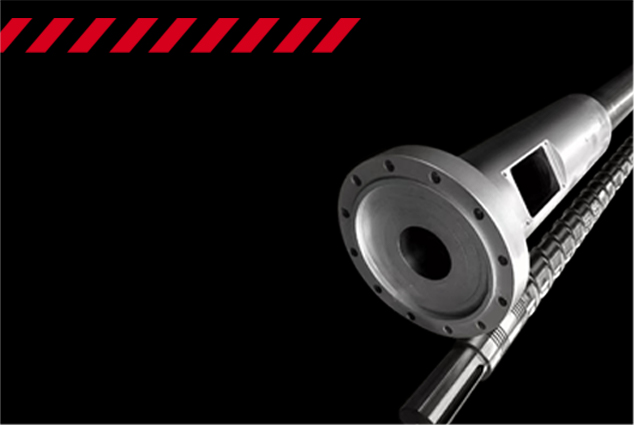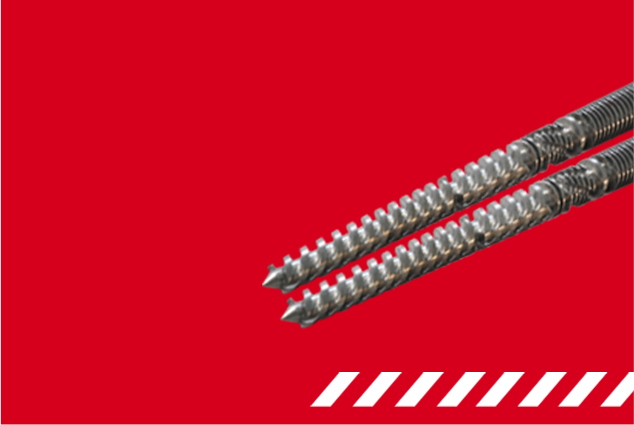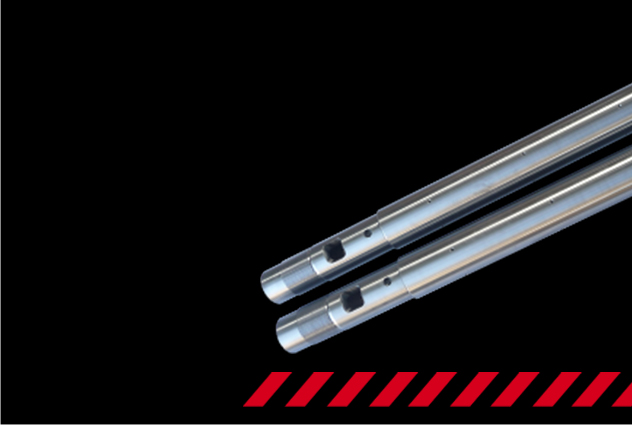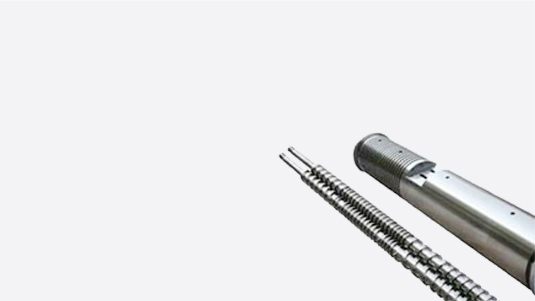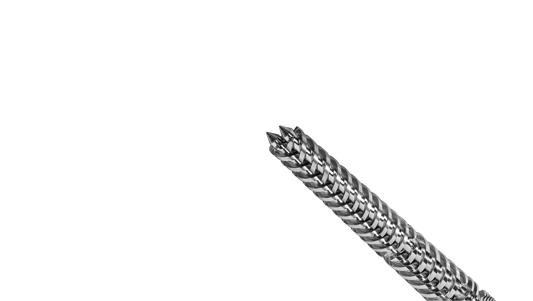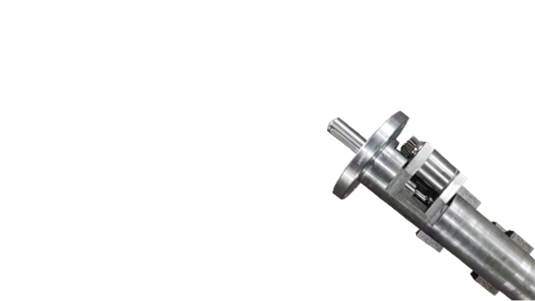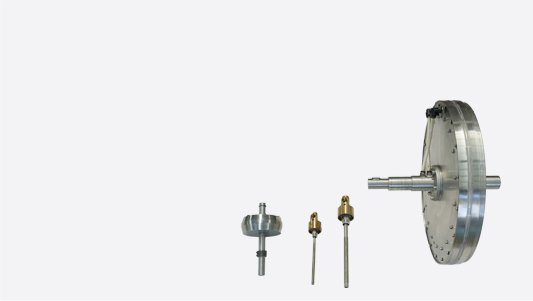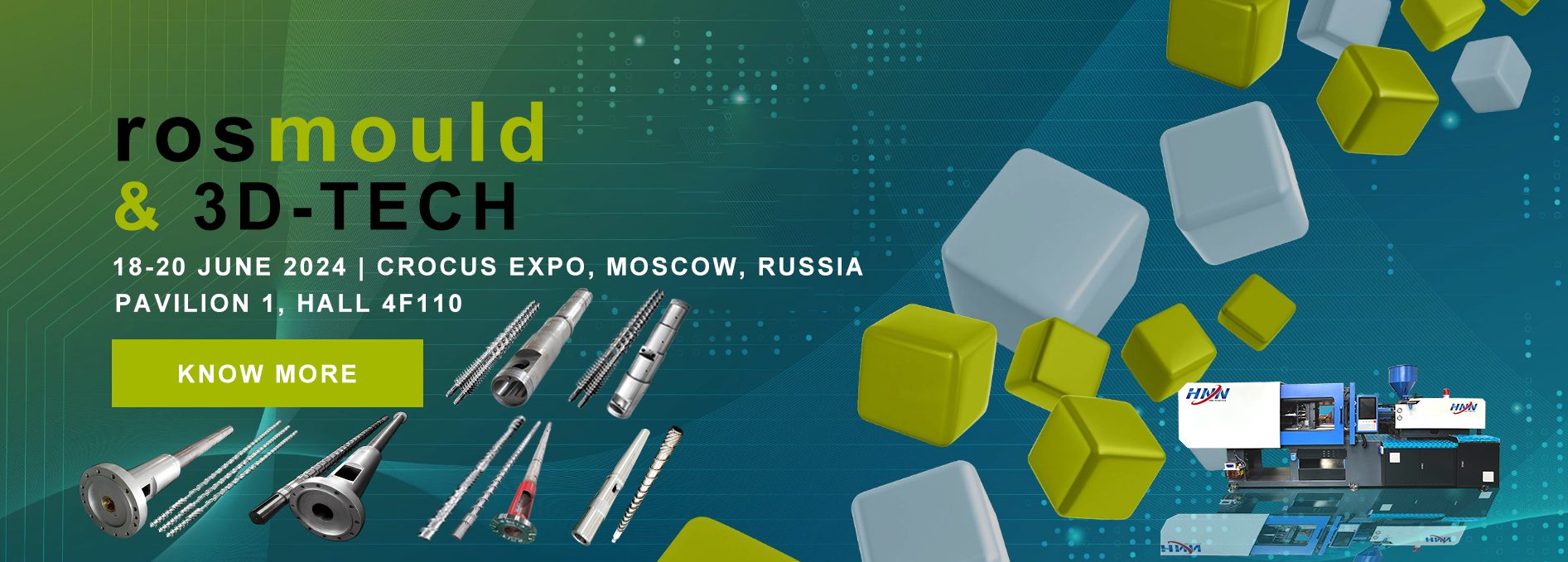
HOT PROD UCT

HOT PROUDCT
ДОБРО ПОЖАЛОВАТЬ В
ZHOUSHAN XINLU PLASTICS MACHINERY CO., LTD.
Zhoushan Xinlu is a professional OEM & OD of screw and barrels for extrusion and injection molding machines who provide high-quality & competitive burst-sales single and twin screw barrel economically and efficiently for nearly16 years!
At present,we produce high-quality series screw and barrel products such as filmblow, waste recycling granulation, extrusion pipe,plate, super-large parallel twin screw conical twin screw, micro-medical instrument screw barrel, food processing screw, and so on, which have received many favorable comments.
We must deal with and solve the various needs of clients in terms of quality, price,delivery time and after-sales service to seek for long-term partners. XINLU welcome to cooperate with you!
ПОСЛЕДНИЕ НОВОСТИ
1.1 Thermal Spraying Repair
Thermal spraying offers surface strengthening for repairs, characterized by high-quality wear-resistant coatings, low cost, high efficiency, and wide applicability. Its basic process involves: melting spraying materials (metals, ceramics, plastics, etc.) into a liquid or molten state, refining them into particles ranging from tens to hundreds of microns, and spraying these particles onto the base material to form a coating.
For example, stainless steel corrosion-resistant steel powder is often used to spray the screws of single-screw plastic extruders for PVC processing. The sprayed coating consists of rapidly quenched particles, which exhibit high hardness. During spraying, a supersaturated alloy state and an oxide film form, further increasing the coating’s hardness—beneficial for enhancing wear resistance. To ensure coating properties and quality, porosity must be controlled by maximizing particle temperature and spraying speed.
Key process parameters for thermal spraying:
Heat Source: Flame spraying typically uses acetylene as fuel, with a temperature of ~3,100°C; arc spraying reaches 5,538–6,649°C; plasma spraying achieves up to 11,093°C. Plasma spraying is optimal for rapid heating and particle transport, followed by arc spraying and oxy-acetylene flame spraying.
Spraying Material: For arc and flame spraying, the diameter of the metal wire must match the heat source power to obtain the best coating.
Spraying Distance: This refers to the distance between the spray gun and the workpiece. Typical values: 100–200 mm for flame spraying, 50–100 mm for plasma spraying, and 180–200 mm for arc spraying.
Spraying Angle: The angle between the central axis of the spray jet and the substrate surface should ideally be 90°, but must not exceed 45° to avoid shadowing effects.
1.2 Chrome Plating
Chrome plating layers exhibit excellent wear resistance, anti-friction, and corrosion resistance, significantly improving the quality of repaired parts—particularly surface wear resistance.
1.3 Cladding Repair
Vacuum fusion alloy coating technology is a modern surface metallurgy technique that modifies the composition and structure of the substrate’s working surface to meet requirements for wear resistance, corrosion resistance, etc. The process occurs under vacuum: concentrated heat melts a pre-applied alloy coating on the substrate surface, allowing it to infiltrate the substrate. Upon cooling, the coating and molten zone recrystallize, forming a strong bond with the substrate. This entire process of melting, infiltration, diffusion, intersolution, and recrystallization constitutes a surface metallurgical reaction.
引自-朱玉明.双螺杆挤出机螺杆机筒的耐磨处理和修复[J].科教文汇(下旬刊),2015,(24):180-181.
Main cause of wear of the screw extruder
The normal wear of the screw and cylinder of the screw extruder mainly occurs in the feeding area and the metering area. The main wear reason is caused by the dry friction between the slice particles and the metal surface, and the wear is reduced.
Screw and cylinder abnormal wear will occur in the screw knot and foreign body stuck, ring refers to the screw condensation material, if the screw extruder lack of good protection device, powerful driving force may twist the screw, stuck will produce extraordinary huge resistance, causing serious damage on the surface of the screw and barrel serious scratches, barrel scratch is difficult to repair.
From the design principle, the service life of the cylinder is longer than the screw. For the normal wear of the cylinder, it is generally no longer repaired. The method of repairing the screw thread is often used to restore the radial clearance between the inner hole of the cylinder and the outer diameter of the screw.
Solution to screw wear
The local damage of screw thread is repaired by overwelding special abrasion anticorrosion alloy. Inert gas protective welding and plasma argon arc welding are generally used, and metal spraying technology can also be used for repair.
First, the surface of the worn screw is ground to a depth of about 1. 5 mm, and then the alloy layer is welded to sufficient size to ensure sufficient processing allowance. Finally, the outer size of the outer circle of the screw and the side of the screw to the screw are the original size.
引自-沈兵.螺杆挤出机的维护保养要点[J].聚酯工业,2011,24(06):49-51.
How to install and adjust the screw extruderInstallation of the barrel
When the barrel deviation, the screw may be difficult to load, barely loaded The screw will be squeezing noise, or damage the screw shaft And shaft sleeve, or scraping screw and barrel, causing disallowed damage. The way to adjust the deflection position of the barrel is to use the front end setting of the barrel The bracket, adjust the height and the left and right deviation.
Installation of screw
When installation, heat the extruder to the operating temperature while the screw is cold The installation is more convenient. When loading the screw is more difficult to the head of the screw shaft, the screw key or the groove are carefully adjusted to the consistent position, generally the flat key at the upper end, and then pushed into the screw.
The installation process is absolutely not to impact and force loading, and carefully check, to confirm that the screw reaches the required position, and turn the screw to check the installation status of the newly mounted screw.
Here is the general installation method for the conical twin screws of a plastic extruder:
1. Preparation Work
Clean relevant components of the extruder, including the barrel, screws, coupling, etc., to ensure there is no debris or dirt.
Check whether the new screws meet the specifications and whether there is any damage or deformation.
Prepare required tools, such as wrenches, screwdrivers, micrometers, etc.
Ensure the extruder’s frame is level with the ground, and adjust it if necessary.
Release all heaters on the screw barrel and connectors.
2. Installing the Screws
Insert the two screws symmetrically into the barrel, first pushing the screws tightly toward the small end of the barrel. Observe the position of the screws; typically, the screw heads should be flush with the barrel, or may be 1-2mm longer or shorter than the barrel.
Push the tails of the screws tightly backward toward the gearbox side and measure the backward distance (assume this distance is 22mm). Determine the thickness of the screw plug based on the relative position of the screws and the barrel in the first step:
If the screws are flush with the barrel in the first step, the screw plug thickness should be 17mm (22mm – 5mm).
If the screws are 1mm longer than the barrel, the screw plug thickness should be 18mm (22mm + 1mm – 5mm).
If the screws are 1mm shorter than the barrel, the screw plug thickness should be 16mm (22mm – 1mm – 5mm).
Generally, set the screw plug thickness to 17mm first, then adjust it according to actual conditions.
Tighten the screw plug into the screw shaft, then install the large nut onto the barrel. Reconfirm the screw position to check whether it has retracted by 5mm (4-6mm is acceptable).
Observe the gap between the two screws from the feed inlet to ensure it is uniform.
3. Final Inspection
Before starting the machine, reconfirm that the screws have retracted toward the gearbox side. Otherwise, when the machine starts, the screws will move forward to the small end of the barrel, which may cause issues such as immobility.
Do not operate the extruder without feeding material, as this may cause the screws to move forward and get stuck.
В 2018 году такие слова, как "зеленый", "экологически чистый" и "пригодный для вторичной переработки", стали актуальными в пластиковой индустрии. По мере того как пластик постепенно интегрируется во все аспекты нашей жизни, он также представляет собой значительную угрозу для экологической обстановки и даже для нас самих.
На сегодняшний день люди произвели 8 миллиардов тонн пластика, и только пластиковые соломинки, попадающие в океан, составляют 8 миллионов тонн ежегодно. Будь то киты и черепахи, плавающие в океане, морепродукты на наших обеденных столах или соль в приправах - все они страдают от пластикового загрязнения, и, в конечном счете, сами люди от него не застрахованы.
Каковы последствия использования большого количества пластиковых изделий? В настоящее время все больше исследований пытаются решить эту загадку, и многие инсайдерские сведения постепенно становятся достоянием общественности. Потребители и производители стремятся обратить внимание на альтернативы пластику, и биопластики, похоже, становятся одним из потенциальных вариантов.
Что такое биопластик? Проще говоря, биопластики - это использование биологических материалов, таких как растения, в качестве сырья для замены нефти, поэтому они также известны как биопластики. В частности, для их производства требуется полимолочная кислота (PLA) из таких растений, как кукуруза и сахарный тростник, или полигидроксиалкановые кислоты (PHA), синтезируемые микроорганизмами. PLA-пластик обычно используется в пищевой промышленности; PHA-пластики чаще всего применяются в медицинском оборудовании, например, для наложения швов и материалов для восстановления сердечно-сосудистой системы. Благодаря тому, что PLA-пластик в основном производится на крупных заводах по производству этанола и других продуктов, в настоящее время он является дешевым и распространенным биопластиком, и многие пластиковые бутылки, контейнеры и текстиль, представленные на рынке, сделаны из него.
Хотя и рынок, и потребители отдают предпочтение этому пластику как заменителю, имеет ли биопластик ценность с точки зрения сокращения выбросов углекислого газа? Но это всегда было предметом споров. По мнению некоторых сторонников биопластика, 8% мировой нефти используется для производства пластмасс. Когда пластик выбрасывается, это означает начало выбросов углерода. Однако в процессе деградации биопластика содержание углерода, выбрасываемого в атмосферу, гораздо ниже, поскольку большая часть углерода поглощается растущими растениями.
Однако все не так просто. В 2011 году в исследовательском отчете Питтсбургского университета сообщалось, что некоторые растения, высаживаемые для производства биопластика, были связаны с загрязнением окружающей среды, в том числе удобрениями и землепользованием. В этом мире, где ресурсов становится все меньше, вопрос о том, как распределить единственные ресурсы, также находится в центре словесных дебатов, а использование кукурузы в качестве материала для производства пластика вместо пищи - в центре дебатов.
Что касается последующей переработки, то, согласно полученным данным, выброшенные биопластики на самом деле имеют разную судьбу: одни из них, как и большинство пластмасс на основе нефти, выбрасываются на свалки, другие отправляются на промышленные заводы по компостированию.
При промышленном компостировании необходимо обеспечить достаточно высокую температуру, чтобы микроорганизмы могли завершить процесс разложения. Без высокоинтенсивного нагрева биопластики не могут быть эффективно разложены в срок, что ничем не отличается от отправки их на свалку или компостирования на собственном заднем дворе. Кроме того, если они попадут в морскую среду, их воздействие не будет отличаться от воздействия пластмасс на основе нефти: и те, и другие разложатся на мелкие фрагменты. Этот медленный процесс будет продолжаться десятилетиями и представлять смертельную угрозу для морской жизни, как и любой другой.
"Если биопластики PLA попадут в океан, они не будут эффективно разлагаться. Тогда они станут раковой опухолью океана, как и все промышленные полимеры", - говорит ученый.
Хотя в современном научном сообществе и некоторых организациях до сих пор ведутся споры о преимуществах биопластиков, в последние годы в рамках циркулярной экономики многие правительства, предприятия и исследователи с оптимизмом смотрят на перспективы биопластиков и продолжают исследования в этой области.






